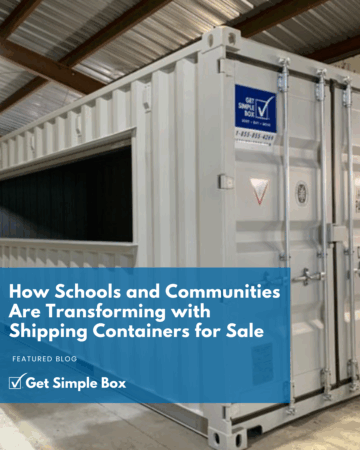Understanding the Different Qualities, Conditions, and Grades of Shipping Containers
The Different Qualities, Conditions, and Grades of Shipping Containers
Choosing the right shipping container can feel overwhelming. With so many qualities, conditions, and grades to consider, how do you know which one is best for your needs? This guide will help you navigate the options so you can make an informed decision that suits your specific requirements.
Shipping Containers Go By Many Names
Shipping containers go by many names. You might hear them referred to as ISO containers, cargo containers, or even conex boxes—a term commonly used by the military. Knowing these different terms can help you search more effectively when you’re looking to buy or rent a container. The most popular sizes of Shipping Containers are 20ft and 40ft.
Understanding the grades and conditions of shipping containers is crucial to finding the right one for your needs. Let’s delve into the various categories:
One-Trip (New) Containers
One-trip containers are essentially new containers that have made a single trip from the manufacturing site—usually overseas—to their destination. They are built overseas (typically in China), loaded with goods, and shipped to North America. This single use reduces the cost of bringing a new container to the market, and those savings are passed on to you.
FEATURES:
- Excellent Condition: Because they’ve only been used once, these containers are in near-perfect condition. They have minimal dents or scratches.
- Clean Interior and Exterior: The interior is clean and bright, with good flooring and adequate ventilation. The exterior paint is usually lighter in color and in excellent shape.
- Easy to Operate Doors: The doors have excellent seals and open and close easily.
BENEFITS:
- Long-Term Investment: One-trip containers offer the best return on investment. They can last 20-30 years before reaching a “used” condition.
- High Resale Value: Due to their excellent condition, they maintain a good resale value.
- Versatility: Ideal for modifications, long-term storage, or shipping.
"We have one-trip containers we've used for over 20 years, and they still look and feel new because they haven't been exposed to multiple trips across the ocean."
Ross Black, CEO of Get Simple Box
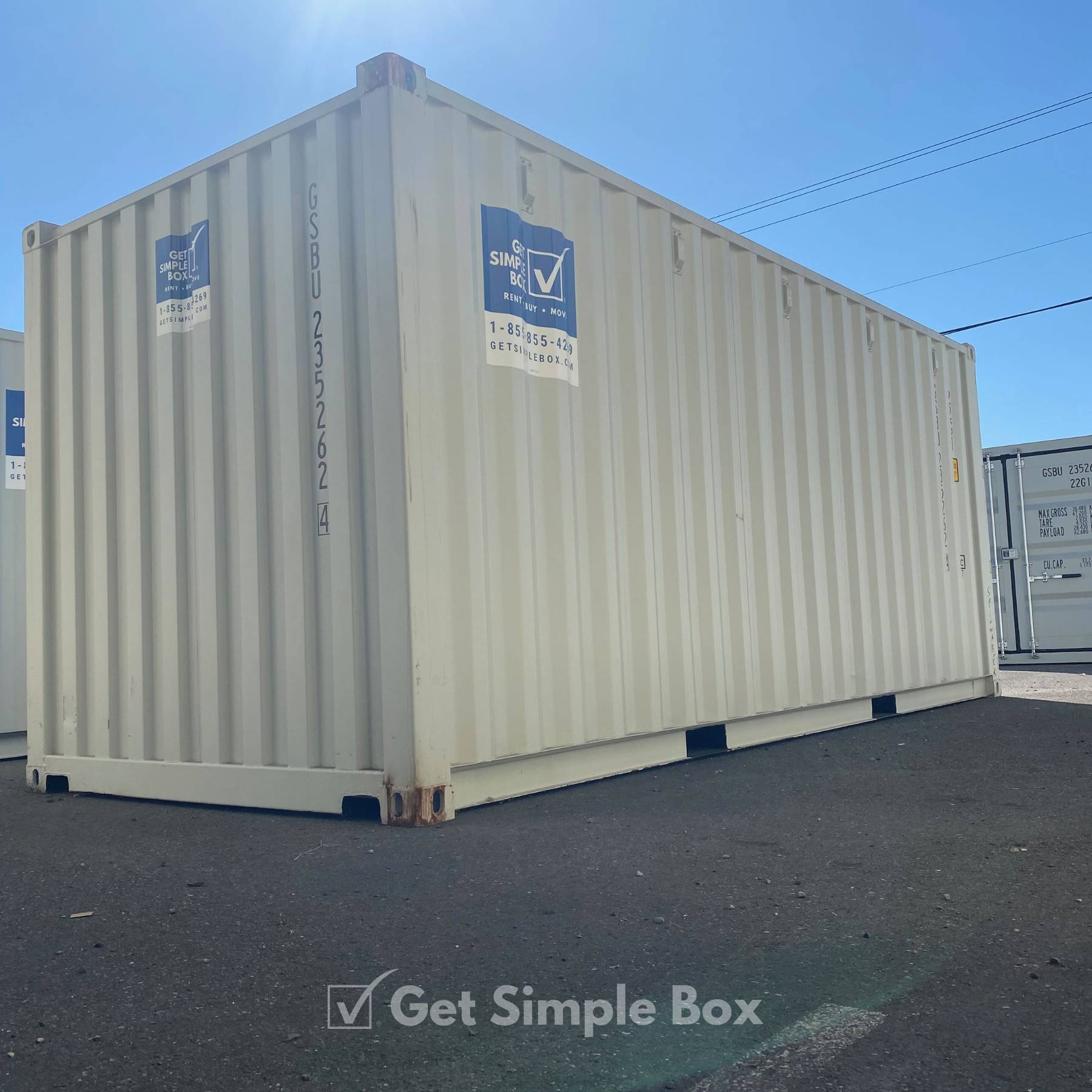
IICL (Institute of International Container Lessors) Containers
IICL (Institute of International Container Lessors) Containers
IICL containers are used containers that meet the highest standards set by the Institute of International Container Lessors. They are often in better condition than standard cargo-worthy containers and are maintained to strict criteria.
FEATURES:
- High Structural Integrity: They meet rigorous inspection standards, ensuring they’re structurally sound.
- Suitable for Shipping: Can be re-certified for international shipping due to their excellent condition.
- Minimal Wear and Tear: While they are used, any dents or scratches are minor.
BENEFITS:
- Reliability: Ideal for shipping goods overseas or for projects requiring high-quality containers.
- Durability: Built to last, they offer a balance between cost and quality.
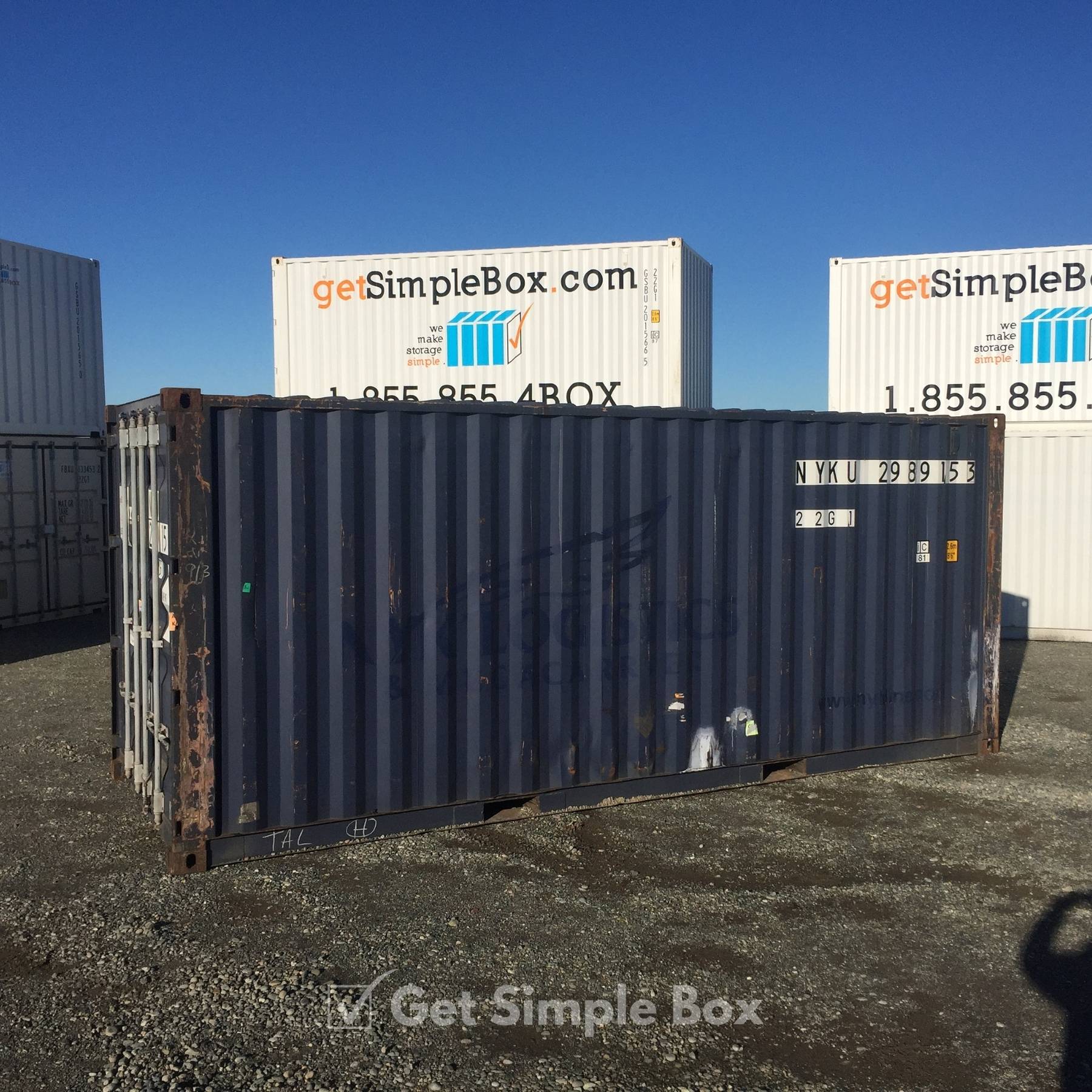
Cargo Worthy (CW) Containers
Cargo-worthy containers are used containers deemed structurally sound enough for shipping cargo overseas. They have been inspected and can be certified for international transport.
FEATURES:
- Solid Structure: No holes; any previous holes have been properly patched.
- Operational Doors: Doors close tightly but may be a bit harder to operate due to age.
- Visible Wear: Expect dings, dents, and surface rust from years of use (typically 10-20 years old).
BENEFITS:
- Affordability: Less expensive than new or IICL containers.
- Versatility: Suitable for storage, shipping, or modifications.
- Certifiable: Can be re-certified for shipping if needed.
CONSIDERATIONS:
- Maintenance: May require a bit more effort to open doors or touch up paint.
- Aesthetics: More wear and tear may affect appearance but not functionality.
"If you want long-term satisfaction and resale value, you should buy a new container."
Ross Black, CEO of Get Simple Box
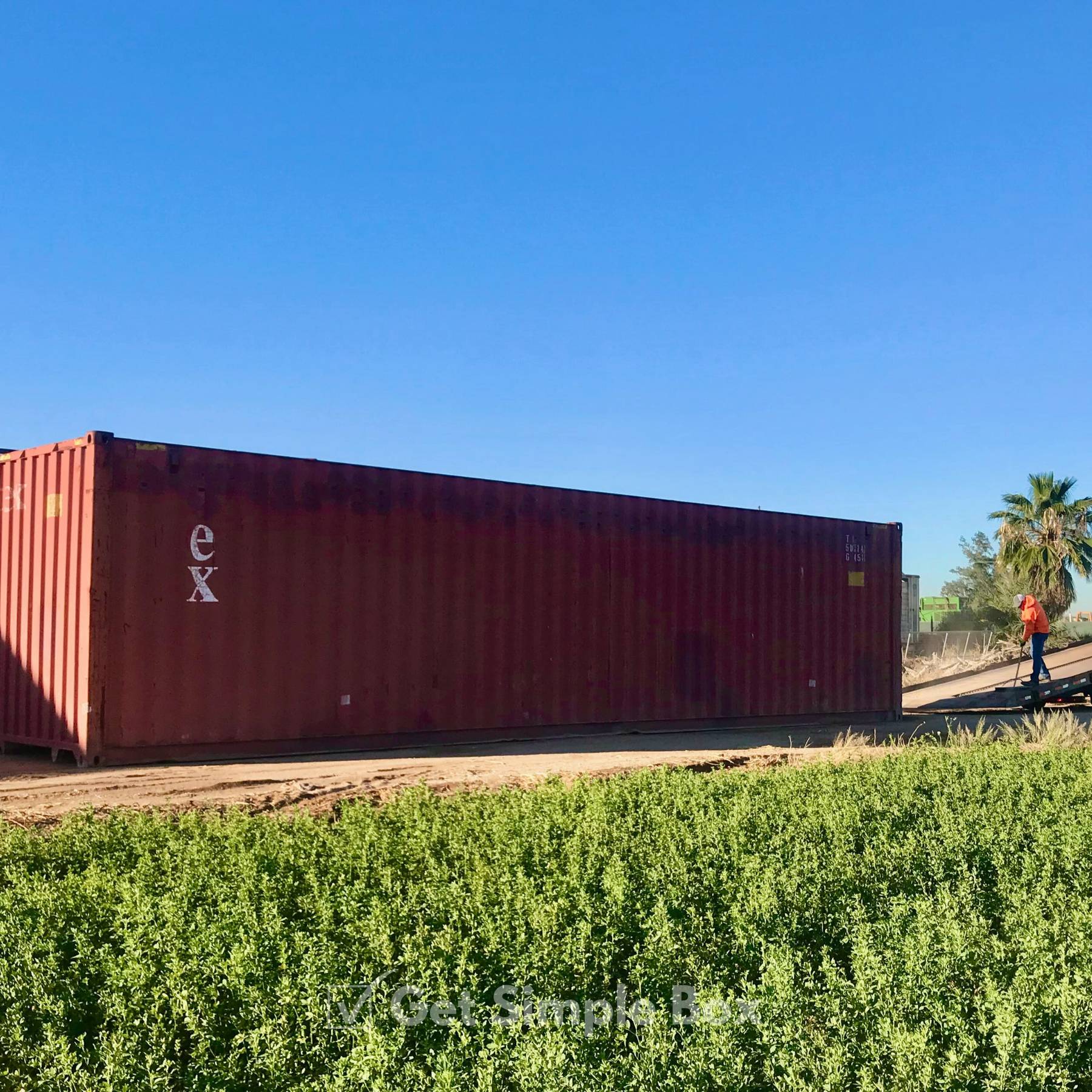
Wind and Water Tight (WWT) Containers
WWT containers are used containers that many companies “claim” to be wind and water tight but are generally in the roughest condition overall. WWT Containers might be suitable for storage but they may not actually be “wind and water tight” and they do not meet the standards required for shipping. We would never purchase a wind and watertight container for our own use and we recommend customers stay away from them.
FEATURES:
- No Leaks: Have been physically checked for holes and sealed if necessary.
- Significant Wear: Likely to have considerable dents, rust, and possibly harder-to-operate doors.
- Structural Issues: May have minor structural problems that don’t affect basic storage use.
BENEFITS:
- Low Cost: Often cheaper than higher-grade containers.
- Basic Storage: Suitable for short-term or less critical storage needs.
CONSIDERATIONS:
- Resale Value: Harder to resell due to their condition.
- Long-Term Use: Not ideal for long-term projects or modifications.
"Many sellers claim a container is great because it's 'Wind and Water Tight,' but actually, that's the lowest grade of used container."
Ross Black, CEO of Get Simple Box
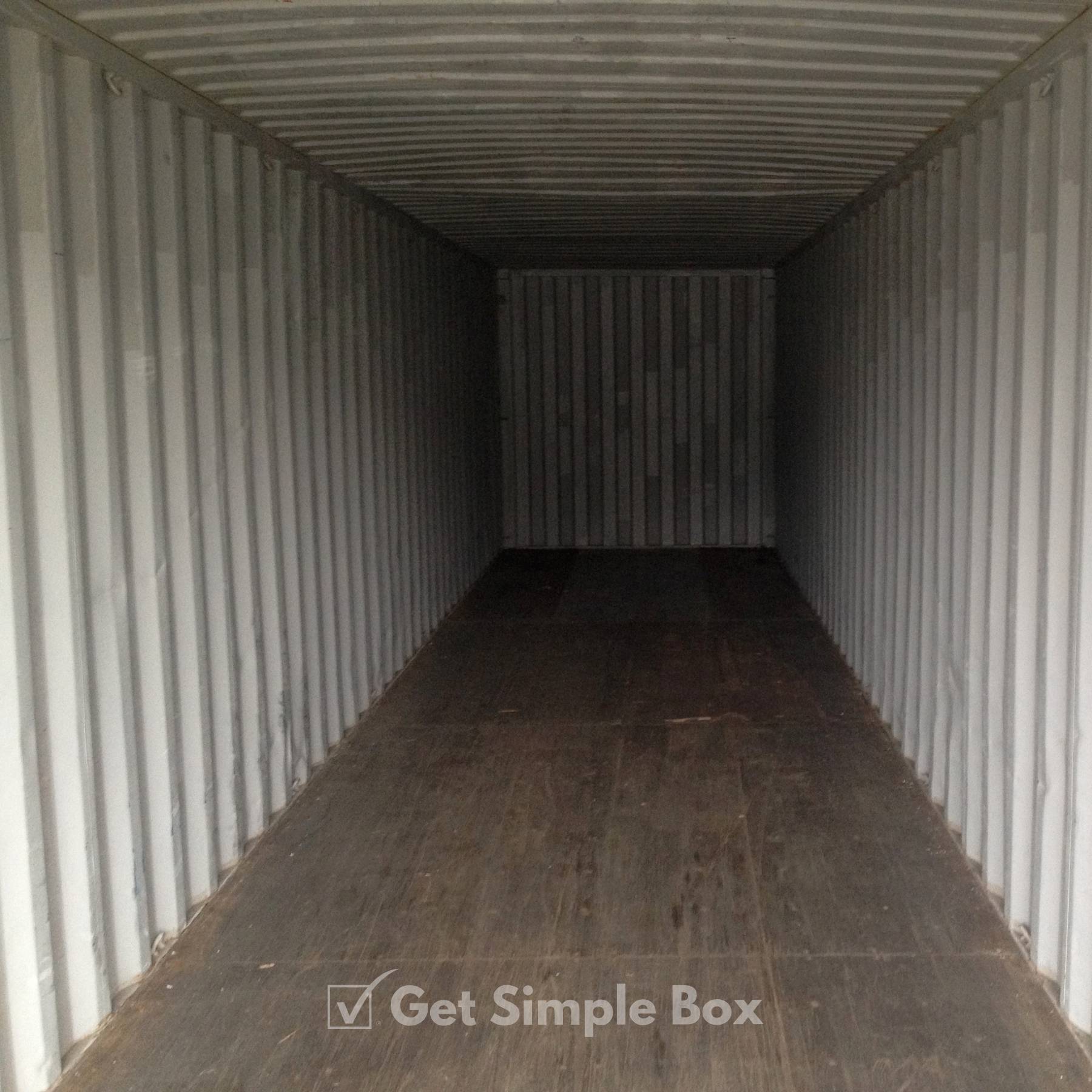
As-Is Containers
As-Is containers are sold in their current condition, which may include significant damage. They are the lowest grade and often require extensive repairs. We never purchase As-is containers and we recommend most customers stay away from them.
FEATURES:
- Possible Damage: May have holes, structural issues, or damaged doors.
- Unpredictable Condition: Quality can vary widely; there are no guarantees.
CONSIDERATIONS:
- High Risk: Not recommended unless you have the ability to make necessary repairs.
- Potential Hidden Costs: Repairs can be costly and time-consuming.
- Limited Use: May not be suitable for storage or shipping without significant work.
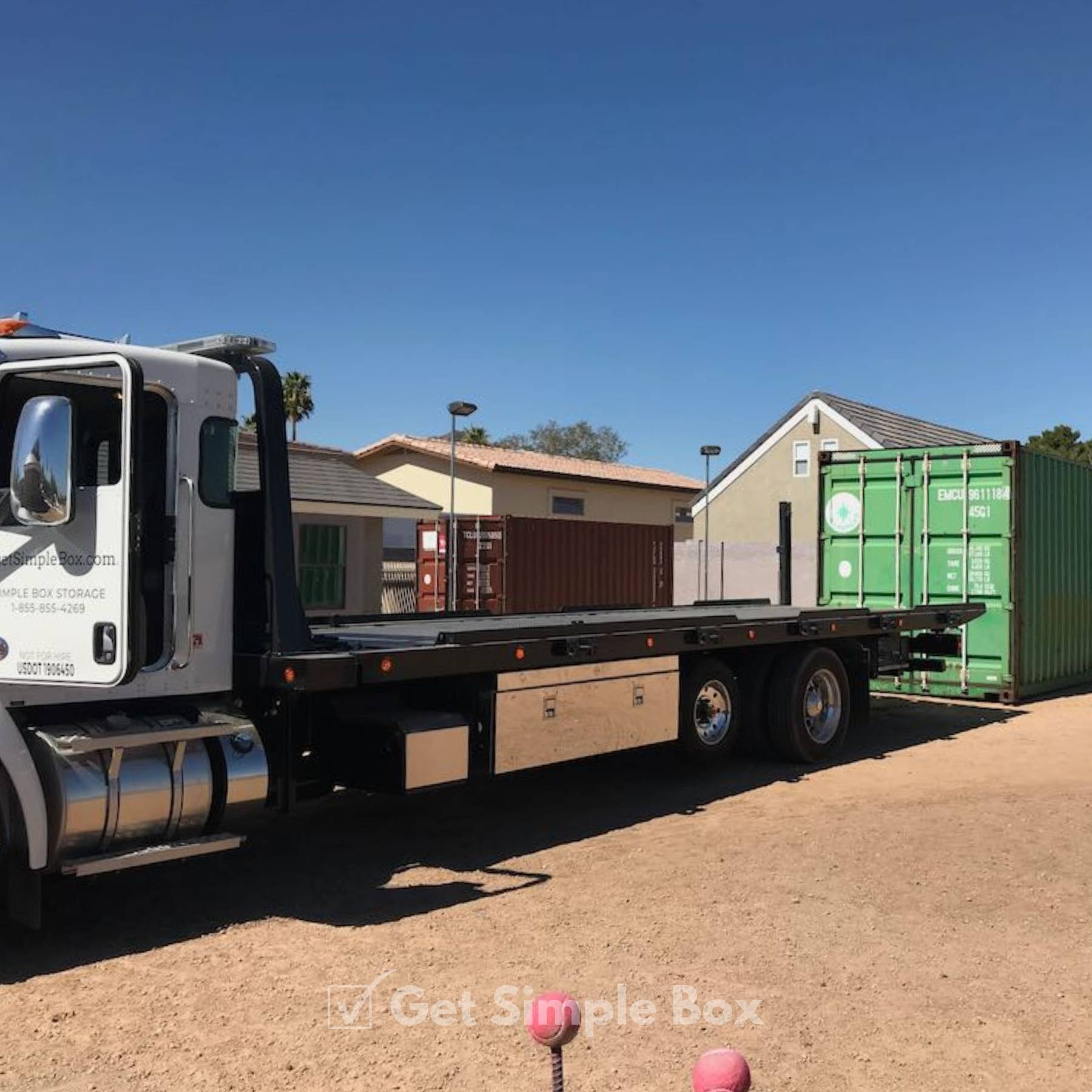
Why Container Grades and Conditions Matter
Why Container Grades and Conditions Matter
Understanding the grade and condition of a shipping container is vital for several reasons:
- Quality Differences: Higher-grade containers offer better condition, longevity, and reliability.
- Investment Value: Investing in a better-quality container like a one-trip or IICL grade provides long-term value and satisfaction.
- Purpose Suitability: The container’s condition affects its suitability for storage, shipping, or modification projects.
- Risk of Hidden Issues: Lower-grade containers may have hidden damages that can lead to unexpected costs.
"While most companies don't let you choose your own container or even know its color, we invite you to our yard to compare and pick the one that suits your needs best."
Ross Black, CEO of Get Simple Box
How to Inspect a Shipping Container
Inspecting a container before purchase ensures you know exactly what you’re getting. Here’s how to conduct a thorough inspection:
Get Simple Box 7-Point Container Inspection Checklist
You may be wondering, how do I conduct a thorough inspection of a used shipping container? What are the signs that a shipping container is not wind and water tight? Here are the things we look for when inspecting Shipping Container:
- Doors:
- Locking Hardware and Handles: Ensure they are attached and functional.
- Light Test: Close the doors and check for any light coming through gaps or holes.
- Rubber Gaskets: Inspect the seals around the doors for integrity.
- Ease of Operation: Open and close the doors to test functionality.
- Roof:
- Leaks and Holes: Check for any signs of leaks, rust, or holes from both inside and outside.
- Welded Patches: Ensure any patches are properly sealed and not rusting.
- Structural Integrity: Walk around (if safe) to check for sagging or damage.
- Walls:
- Light Test: Inspect all walls for holes or gaps by looking for light penetration.
- Dents and Dings: Note any significant dents that could affect structural integrity.
- Vents: Ensure vents are present and unobstructed for proper airflow.
- Floor:
- Condition of Floorboards: Look for rot, soft spots, or missing sections.
- Flatness: Check that the floor is level without significant warping.
- Understructure: If possible, inspect the underside for damage or rust.
- Undercarriage:
- Structural Beams: Examine for dents, rust, or damage to the main support beams.
- Welds: Check that all welds are intact and free from cracks or corrosion.
- Ventilation:
- Vents Condition: Ensure they are intact and free from blockages.
- Adequate Airflow: Proper ventilation prevents moisture build-up inside the container.
- Overall Condition:
- Paint and Rust: Look for areas where paint is peeling or rust is forming.
- Odors: Unpleasant smells may indicate mold or chemical residues.
- Aesthetics vs. Functionality: Decide if cosmetic issues affect your intended use.
"We perform our own 7-point Quality Inspection, take photos of every container, test the doors, and examine the ceiling."
Ross Black, CEO of Get Simple Box
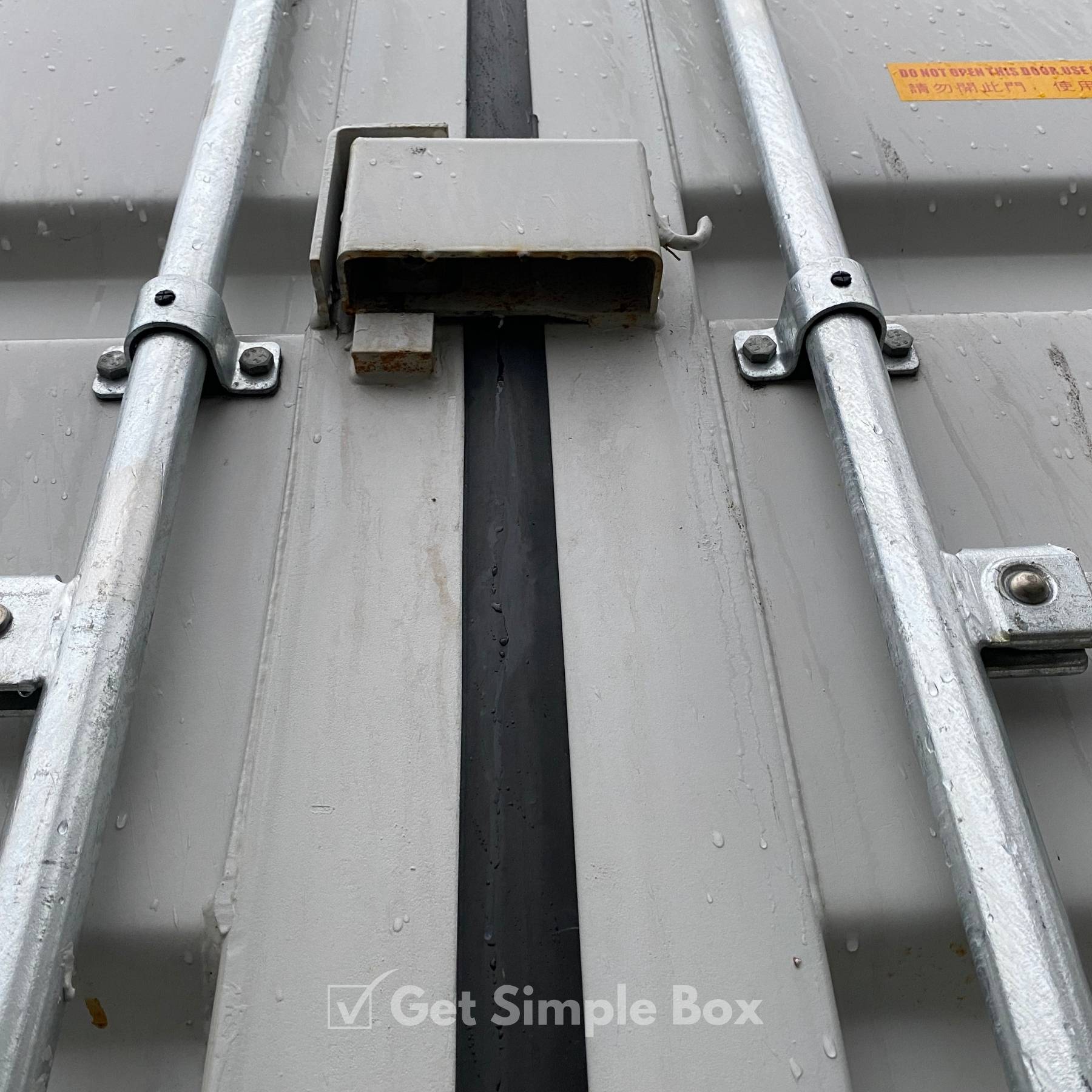
Beware of Low-Quality Containers
It’s important to be cautious when purchasing a shipping container, especially from wholesalers or less reputable sellers on sites like Craigslist, Marketplace, or Offerup.
Risks of Buying from Wholesalers:
- Lower-Grade Containers: They may sell containers that are Wind and Water Tight or As-Is, which are the lowest quality.
- Hidden Damages: Issues like structural damage or leaks may not be disclosed.
- Lack of Ownership: Sellers might not own the containers they are selling, acting only as middlemen and just driving the price up.
- No Delivery Support: They may not have their own delivery trucks, leading to potential issues.
- Limited Customer Service: They often focus on high-volume sales without long-term customer support.
“When dealing with a Cheap Container Vendor on Facebook or Craigslist, potential customers should know they’re usually working with a middleman who doesn’t own the container or have a delivery truck. They won’t be there for you if there are issues down the line.” — Ross Black, CEO of Get Simple Box
Why Choose a Reputable Seller:
- Quality Assurance: Reputable sellers provide higher-grade containers like One-Trip or Cargo Worthy.
- Transparency: They allow you to inspect and choose your container.
- Customer Support: Offer warranties, guarantees, and long-term assistance.
- Delivery Services: Own delivery trucks and have experienced drivers.
- Modification and Resale Services: Can assist with customizing your container and help when you’re ready to sell.
Common Questions to Ask:
- Why might cheaper containers cost more in the long run?
- What should I look for in a reputable container seller?
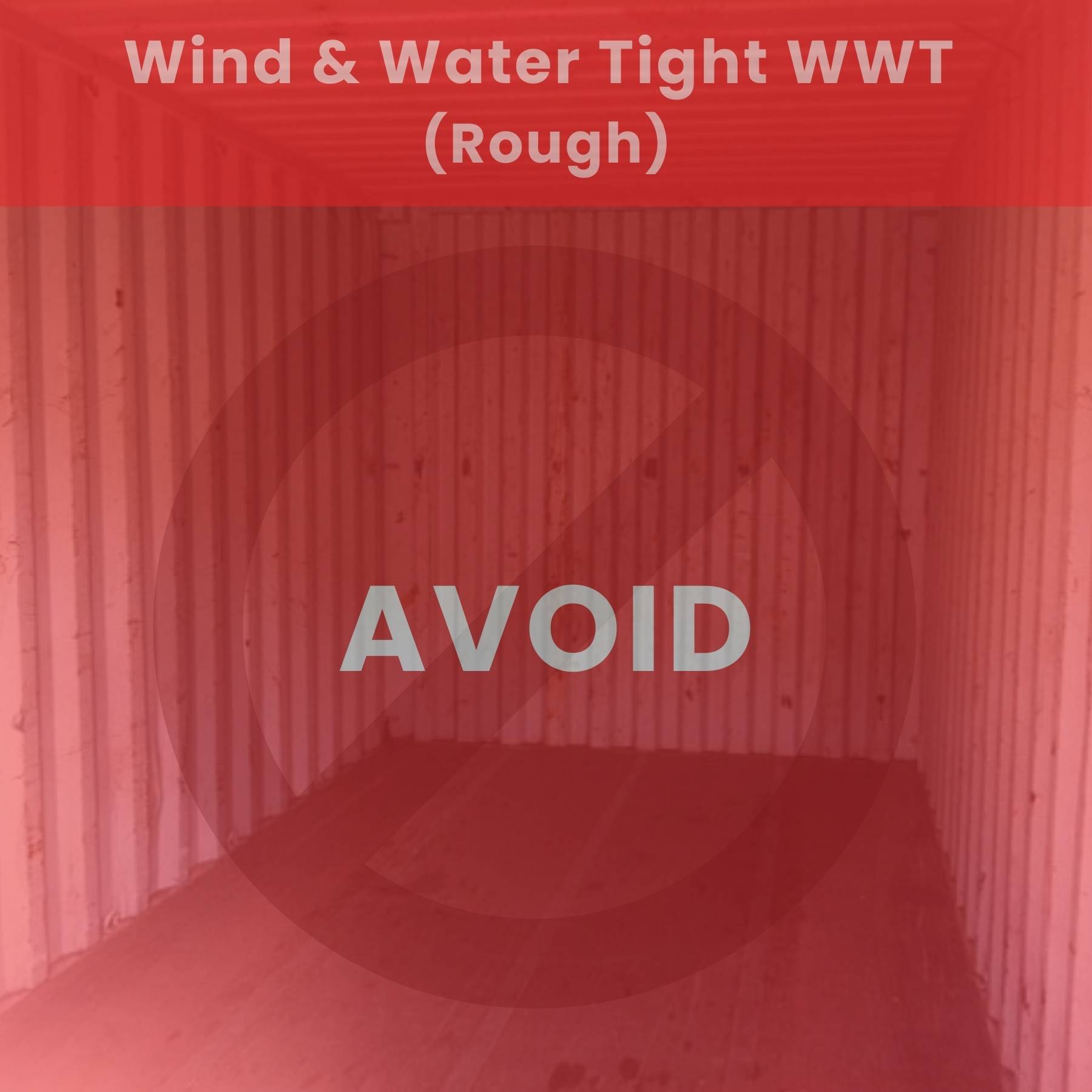
Frequently Asked Questions
- What is a one-trip shipping container?
A one-trip shipping container is a near-new container that has been used only once to transport goods, usually from the manufacturing country to its destination. - Why are one-trip shipping containers more expensive?
They are more expensive because they are in excellent condition, offering the longest lifespan and best resale value. - How do I determine if a shipping container is cargo worthy?
A cargo-worthy container must pass an inspection by a certified surveyor, confirming it is structurally sound for shipping cargo overseas. - What does IICL grade mean for shipping containers?
IICL grade refers to containers that meet the highest standards set by the Institute of International Container Lessors, indicating excellent condition for used containers. - Why is the grade of a shipping container important?
The grade affects the container’s condition, lifespan, suitability for shipping or storage, and overall value. - How to inspect a used shipping container?
Use a comprehensive checklist to examine the doors, roof, walls, floor, undercarriage, and overall condition for any signs of damage or wear. - What are common problems with used shipping containers?
Common issues include rust, dents, difficult-to-operate doors, holes, and structural wear. - Why might someone choose a WWT container over a CW container?
They may choose a WWT container due to a lower upfront cost, but this is generally not recommended due to potential hidden issues. - Who should consider buying a used shipping container?
Those on a tight budget or needing a container for basic, short-term storage might consider a used container.
10. What makes a shipping container suitable for storage vs. shipping?
A container suitable for shipping must meet strict structural standards and be certified by a professional surveyor, while a storage container primarily needs to be secure, wind and water tight, and have doors that function properly.
Confidence in Choosing Your Container
"With 27 years in the industry and thousands of 5-star reviews, customers know they can count on us."
Ross Black, CEO of Get Simple Box
Understanding the different qualities, conditions, and grades of shipping containers helps you make an informed decision. Whether you need a container for storage, shipping, or a custom project, choosing the right one is crucial for your satisfaction and investment.
The right container is a valuable investment that can serve you well for many years. Remember to inspect carefully and buy from reputable sellers to ensure you get a quality product that meets your needs.
If you have more questions or need help choosing a container, contact Get Simple Box. We provide quality containers with warranties and excellent customer service.
By understanding the different options available, you can choose a shipping container that meets your needs and offers the best value. Whether you’re looking for a new one-trip container or a reliable used one, knowing what to look for will help you make the best choice.
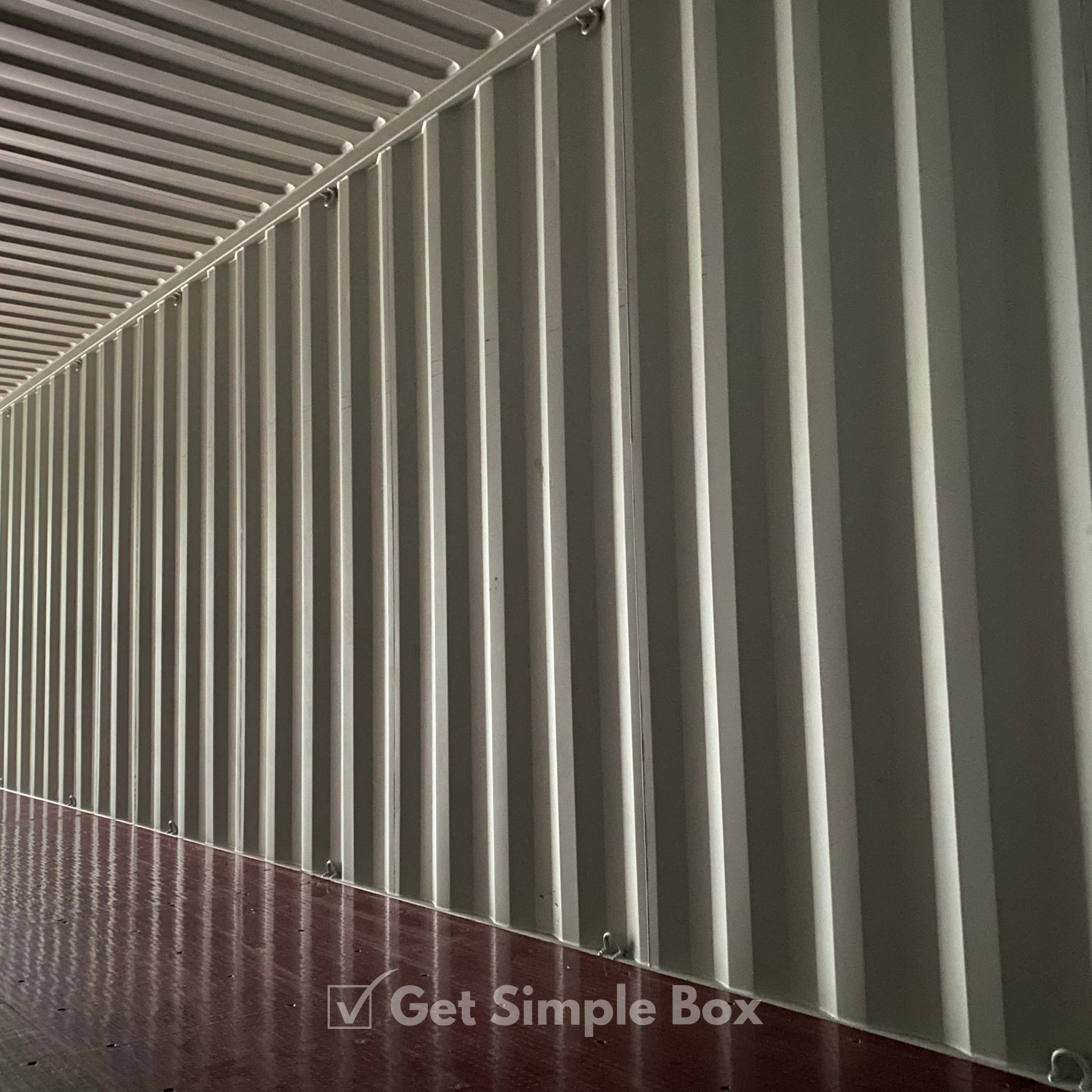
Share:
Related Posts
Shipping Containers for Sale in Ellensburg: Smart Solutions for Schools and Communities Table of Contents Smarter Space Solutions for Ellensburg
Shipping Container Insulation Guide for Safe Winter Storage When the colder months arrive, many people turn to shipping containers as
How to Get the Best Deal on a Shipping Container Living in Desert Hot Springs is a unique experience. Nestled
Step-by-Step Guide to Renting Shipping Containers in Stanwood, WA If you’ve ever made the trip to a self-storage facility in
Creative Ways Schools and Communities Use Shipping Containers for Sale Table of Contents When most people hear the phrase shipping
Renting Shipping Containers in El Mirage Made Easy Table of Contents Storage on Your Terms If you live in El




